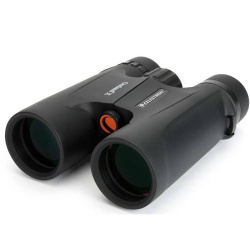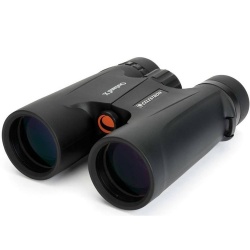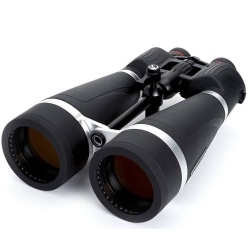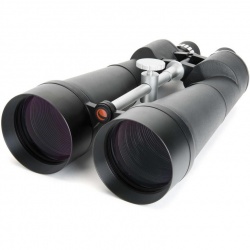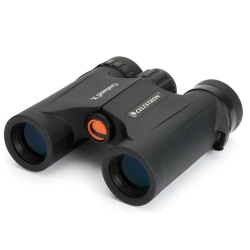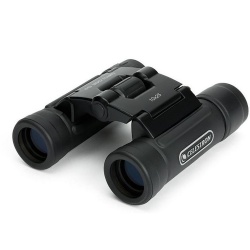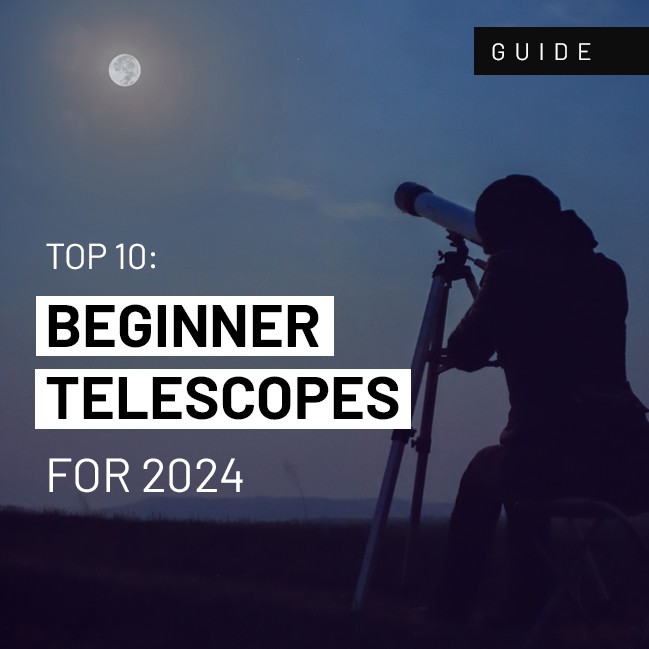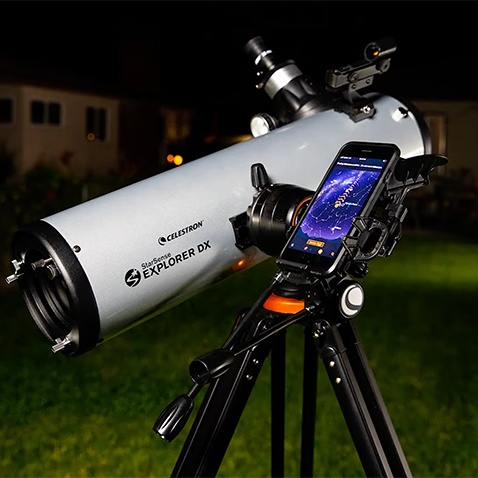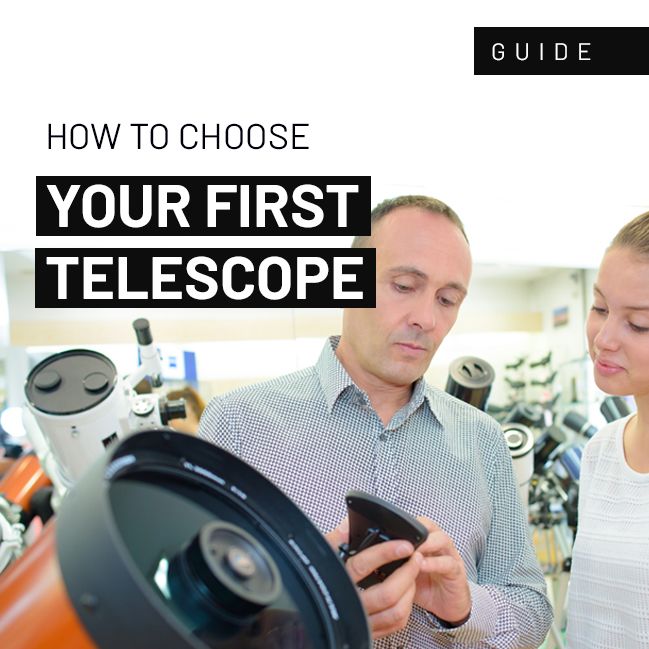Best binoculars for astronomy
30 September 2023 | Admin
A good pair of binoculars can give you a great view of the night sky like nothing else can get close to. Here’s what you need to know.
Most people associate stargazing and astronomy with telescopes, but there are many advantages of using binoculars. Affordable, easy to use and highly portable, a good pair of binoculars can give you years of amazing views of the moon, star clusters and even galaxies way beyond what you can see with the naked eye.
The night sky can be divided into three layers; what you can see with the naked eye (the moon, planets and constellations), what binoculars reveal (dense starfields) and what telescopes can see (fainter objects like galaxies and nebulae). Most people go from the first layer to the third layer, but there are lots of reasons to observe the night sky using binoculars:
- Binoculars are more affordable and easier to use than a telescope.
- Binoculars can fit in a glovebox or backpack so can go everywhere with you.
- Binoculars give you a right-side-up image of objects, unlike the upside-down and reversed images telescopes produce.
- Binoculars have a wider field of view than a telescope, so are perfect for open star clusters such as the Pleiades and the Hyades.
Choosing the best binoculars for stargazing and astronomy
Finding the best binoculars for astronomy means identifying the best balance between magnification and light-gathering capability.
- Magnification (power): expressed as a number as a multiplier (such as 7x, 10x or 20x), with a higher number meaning more magnification.
- Size of the objective lens (aperture): expressed in millimetres (mm), this refers to the diameter of the lenses on the end of the binoculars – and determines if they can be used in the dark. Ideally you’ll need 42mm or higher.
The three kinds of binoculars for stargazing and astronomy
1. Mid-size astronomy binoculars
Recommended specs for beginners are around 7x to 10x magnification and an aperture of 42mm to 50mm, represented as 7x42, 10x50, or similar combinations. These are ideal for unlocking the night sky’s starfields, open clusters and solar system objects – including the moons of Jupiter – and can be held in the hand. These are the best choice for most people.
 | | 1 in stock, immediate despatch |
The Celestron UPCLOSE G2 Porro Binocular - 10x50 is a good, high quality, all round binocular. Perfect for all your outdoor activities, at a competitive price. |
|
 | | In stock, immediate despatch |
The Celestron Outland X Binocular - 8x42 is a midsized binocular designed to meet the needs of every outdoor enthusiast. The optics are multi-coated with BaK-4 glass to give you enhanced colour fidelity. |
|
 | | In stock, immediate despatch |
The Celestron Outland X Binocular - 10x42 is a midsized binocular designed to meet the needs of every outdoor enthusiast. The optics are multi-coated with BaK-4 glass to give you enhanced colour fidelity. |
2. Specialist astronomy binoculars
Large and heavy binoculars with high magnifications (e.g., 25x70, 20x80 or 25x100) can show you incredible views of objects in the night sky that rival a telescope. However, they won’t show much in the way of starfields or constellations. There is a downside; most specialist astronomy binoculars come with a way of attaching them to a tripod because the higher magnifications and bulky size can lead to a shaky image.
 | | In stock, immediate despatch |
Celestron Skymaster Binocular - 25x70 large aperture binoculars are high performance binoculars ideal for astronomical viewing or for terrestrial (land) use especially over long distances. |
|
 | | Awaiting Stock - More Units Expected |
The Celestron Skymaster Binoculars - 20x80 are high performance binoculars ideal for astronomical viewing or for terrestrial (land) use, especially over long distances. |
|
 | | In stock, immediate despatch |
The Celestron SkyMaster Pro 20x80 Binocular features XLT coatings, 80mm objective lens and BaK-4 Prisms. They have a built-in tripod adapter, Reflex Sight Ready Rail, are waterproof and nitrogen purged. |
|
 | | In stock, immediate despatch |
The Celestron Skymaster Binoculars - 25x100 are high performance binoculars ideal for astronomical viewing or for terrestrial (land) use, especially over long distances.
Note: These binoculars are large & heavy (4Kg) we suggest they are used in conjunction with a tripod. |
3. Small pocket-sized all-round binoculars
If you only want small ‘roof’ binoculars it does mean a sacrifice in what you’ll see – largely because they’ll let much less light in – but even highly portable binoculars with specs like 10x25 are good for seeing lots of stars in the night sky.
 | | In stock, immediate despatch |
The Celestron LandScout 10x25 Roof Binoculars are perfect for general use and feature coated optics, a carry case and neck strap. They come with a Limited Lifetime Warranty |
|
 | | In stock, immediate despatch |
The Celestron Outland X Binocular - 10x25 is a midsized binocular designed to meet the needs of every outdoor enthusiast. The optics are multi-coated with BaK-4 glass to give you enhanced colour fidelity. |
|
 | | 1 in stock, immediate despatch |
Celestron UpClose G2 Roof 10x25 Binoculars are a high quality general purpose binoculars at an affordable price. Have BK-7 optical glass, are water-resistant and comes with a neck strap, soft carry case and a limited lifetime warranty. |
What else to look for
Here are some other things to look out for when choosing the best binoculars for stargazing and astronomy:
- Eye relief: if you wear glasses then look for eye relief of 15mm or more so you can see as much of the image as possible.
- Porro prisms: while modern and affordable compact binoculars tend to use the lightweight roof prism optical design, it’s the older porro prism optical design that often works best for astronomy.
- Glass: look for higher quality BaK-4 glass prisms, multi-coated optics (for brighter images at night) and low dispersion glass (for truer colour).

